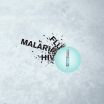(Press-News.org) DETROIT – The effect of guidelines recommending that elderly men should not be routinely screened for prostate cancer "has been minimal at best," according to a new study led by researchers at Henry Ford Hospital.
The study, published as a research letter online in JAMA Internal Medicine, focused on the use of PSA – prostate-specific antigen – to test for prostate cancer.
"We found that the effect of the guidelines recommending against the routine screening of elderly men in particular has been minimal at best," says Jesse Sammon, D.O., a researcher at Henry Ford's Vattikuti Urology Institute and lead author of the study.
The researchers found an estimated 17 million men age 50 or older without a history of prostate cancer or prostate problems who reported undergoing PSA screening.
Though credited with a significant improvement in 5-year cancer survival rates during the first decade after the FDA approved PSA testing of men without symptoms, its use for routine screening is controversial.
"The concern is that the test often provides false-positives, leading subjects who do not have a prostate malignancy to undergo treatment they don't need and suffer such side effects as impotence and urinary incontinence," says Dr. Sammon.
Nearly three years ago, the debate led the U.S. Preventative Services Task Force to recommend against routine PSA screening in any age group.
"But in the time since, nationwide patterns of PSA screening were largely unknown," says Dr. Sammon. "We sought to examine those patterns to determine the effects of the most recent USPSTF recommendation."
The Henry Ford researchers drew their data from the 2012 Behavioral Risk Factor Surveillance System, the world's largest continuously conducted health survey.
The study group was analyzed according to age, race and/or ethnicity, education, income, residence location, insurance status, access to regular health care and marital status.
Higher rates of screening were most strongly associated with access to regular health care, followed by an income greater than $75,000, college education, health insurance and those between the ages of 70 to 74.
The next highest rate of screening – by only a fraction of a percentage point – was in men ages 65 to 69. Those ages 50 to 54 were found to be the least likely to report PSA screening, although several professional medical organizations have previously recommended screening for that age group.
In addition, an analysis of self-reported PSA screening across the U.S. found the highest rate (59.4 percent) in Hawaii and the lowest (24.5 percent) in New Hampshire.
"Looking at rates of colorectal and breast cancer screening, state-by-state and regional variability is expected," Dr. Sammon explains, "but not to the pronounced extent that we found for PSA screening.
"This was another concerning and surprising study finding. It's alarming that the prevalence of PSA screening can double from one state to the next."
The Henry Ford researchers said their findings likely reflect "both the considerable disagreement among experts and the conflicting recommendations on PSA screening.
"Taken together, these results suggest that national guidelines have had a limited effect on clinical practice among health care providers," says Dr. Sammon.
INFORMATION:
Professional recommendations against routine prostate cancer screening have little effect
2014-09-18
ELSE PRESS RELEASES FROM THIS DATE:
New insights on an ancient plague could improve treatments for infections
2014-09-18
DURHAM, N.C. – Dangerous new pathogens such as the Ebola virus invoke scary scenarios of deadly epidemics, but even ancient scourges such as the bubonic plague are still providing researchers with new insights on how the body responds to infections.
In a study published online Sept. 18, 2014, in the journal Immunity, researchers at Duke Medicine and Duke-NUS Graduate Medical School Singapore detail how the Yersinia pestis bacteria that cause bubonic plague hitchhike on immune cells in the lymph nodes and eventually ride into the lungs and the blood stream, where the infection ...
Sensing neuronal activity with light
2014-09-18
For years, neuroscientists have been trying to develop tools that would allow them to clearly view the brain's circuitry in action—from the first moment a neuron fires to the resulting behavior in a whole organism. To get this complete picture, neuroscientists are working to develop a range of new tools to study the brain. Researchers at Caltech have developed one such tool that provides a new way of mapping neural networks in a living organism.
The work—a collaboration between Viviana Gradinaru (BS '05), assistant professor of biology and biological engineering, and ...
No sedative necessary: Scientists discover new 'sleep node' in the brain
2014-09-18
BUFFALO, N.Y. – A sleep-promoting circuit located deep in the primitive brainstem has revealed how we fall into deep sleep. Discovered by researchers at Harvard School of Medicine and the University at Buffalo School of Medicine and Biomedical Sciences, this is only the second "sleep node" identified in the mammalian brain whose activity appears to be both necessary and sufficient to produce deep sleep.
Published online in August in Nature Neuroscience, the study demonstrates that fully half of all of the brain's sleep-promoting activity originates from the parafacial ...
Miranda: An icy moon deformed by tidal heating
2014-09-18
Boulder, Colo., USA – Miranda, a small, icy moon of Uranus, is one of the most visually striking and enigmatic bodies in the solar system. Despite its relatively small size, Miranda appears to have experienced an episode of intense resurfacing that resulted in the formation of at least three remarkable and unique surface features -- polygonal-shaped regions called coronae.
These coronae are visible in Miranda's southern hemisphere, and each one is at least 200 km across. Arden corona, the largest, has ridges and troughs with up to 2 km of relief. Elsinore corona has ...
Research milestone in CCHF virus could help identify new treatments
2014-09-18
SAN ANTONIO, September 18, 2014 – New research into the Crimean-Congo hemorrhagic fever virus (CCHFV), a tick-borne virus which causes a severe hemorrhagic disease in humans similar to that caused by Ebolavirus, has identified new cellular factors essential for CCHFV infection. This discovery has the potential to lead to novel targets for therapeutic interventions against the pathogen.
The research, reported in a paper published today in the journal PLoS Pathogens and conducted by scientists at the Texas Biomedical Research Institute and their colleagues, represents ...
Microplastic pollution discovered in St. Lawrence River sediments
2014-09-18
A team of researchers from McGill University and the Quebec government have discovered microplastics (in the form of polyethylene 'microbeads', END ...
A new quality control pathway in the cell
2014-09-18
Proteins are important building blocks in our cells and each cell contains millions of different protein molecules. They are involved in everything from structural to regulatory aspects in the cell. Proteins are constructed as linear molecules but they only become functional once they are folded into specific three-dimensional structures. Several factors, like mutations, stress and age, can interfere with this folding process and induce protein misfolding. Accumulated misfolded proteins are toxic and to prevent this, cells have developed quality control systems just like ...
Small, fast, and crowded: Mammal traits amplify tick-borne illness
2014-09-18
(Millbrook, N.Y.) In the U.S., some 300,000 people are diagnosed with Lyme disease annually. Thousands also suffer from babesiosis and anaplasmosis, tick-borne ailments that can occur alone or as co-infections with Lyme disease. According to a new paper published in PLOS ONE, when small, fast-living mammals abound, so too does our risk of getting sick.
In eastern and central North America, blacklegged ticks are the primary vectors for Lyme disease, babesiosis, and anaplasmosis. The pathogens that cause these illnesses are widespread in nature; ticks acquire them when ...
Curcumin, special peptides boost cancer-blocking PIAS3 to neutralize STAT3 in mesothelioma
2014-09-18
A common Asian spice and cancer-hampering molecules show promise in slowing the progression of mesothelioma, a cancer of the lung's lining often linked to asbestos. Scientists from Case Western Reserve University and the Georg-Speyer-Haus in Frankfurt, Germany, demonstrate that application of curcumin, a derivative of the spice turmeric, and cancer-inhibiting peptides increase levels of a protein inhibitor known to combat the progression of this cancer. Their findings appeared in the Aug. 14 online edition Clinical Cancer Research; the print version of the article will ...
A new way to prevent the spread of devastating diseases
2014-09-18
For decades, researchers have tried to develop broadly effective vaccines to prevent the spread of illnesses such as HIV, malaria, and tuberculosis. While limited progress has been made along these lines, there are still no licensed vaccinations available that can protect most people from these devastating diseases.
So what are immunologists to do when vaccines just aren't working?
At Caltech, Nobel Laureate David Baltimore and his colleagues have approached the problem in a different way. Whereas vaccines introduce substances such as antigens into the body hoping ...






